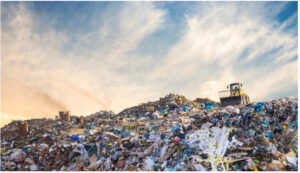Plastic Credits: A promising solution for a sustainable and plastic-free future


Plastic waste pollution is steadily increasing, with an overwhelming amount of research showing that the human population generates over 400 million tonnes of plastic each year and that this figure is expected to triple by 2060. Of this, only 10-15 per cent is collected and recycled and the rest is either landfilled, burnt, or becomes litter.
Plastic is remarkably durable and can extend for a very long period before breaking down. The negative impacts of exposure to plastics and microplastics on our health, the oceans, and the ecosystem linger. According to UN-Habitat, the greater Nairobi region, for instance, produces roughly 3,207 tonnes of waste every day, 20% of which is plastic. Owing to these factors, it comes as no surprise that plastic pollution is receiving significant global attention with efforts being directed towards establishing an international legally binding instrument on plastic pollution by the end of 2024.
Single-use plastics, in particular, have come under scrutiny. The convenience they offer comes at a steep cost, as these items often end up discarded after just one use. From plastic bags to disposable cutlery and water bottles, the pervasiveness of single-use plastics exacerbates the crisis. Fortunately, Kenya has made remarkable strides towards curtailing the prevalence of single-use plastics. In 2017, championed by former President Uhuru Kenyatta, a ban on the use of single-use plastic bags was introduced. By June 2020, visitors were not permitted to bring plastic water bottles, cups, throwaway plates, silverware, or straws into Kenya’s national parks, beaches, forests, or conservation areas. Despite these significant efforts, Kenya still grapples with the challenge of non-biodegradable plastic pollution.
Amid this environmental crisis, the concept of plastic credits offers a glimmer of hope. Plastic credits operate on the principle of reducing, reusing, and recycling plastics. They function in a manner similar to carbon credits, allowing organisations and individuals to offset their plastic footprint. The process begins with the issuance of plastic credits, often by a regulatory body or a certifying organisation. These credits are awarded based on the amount of plastic waste reduced or recycled. Players who actively reduce plastic use and support recycling efforts earn plastic credits, which can then be sold or traded on a marketplace. Entities that generate less plastic waste can sell their surplus credits to those struggling to meet their reduction targets, creating a financial incentive for sustainability. This approach ensures that reducing plastic waste becomes economically viable.
The benefits of plastic credits are multifaceted. Businesses, in particular, can benefit from adopting plastic credit programmes, as they can enhance their sustainability credentials and engage in responsible corporate citizenship. Furthermore, plastic credits promote innovation. Companies are incentivised to develop and implement strategies for reducing plastic use and improving recycling rates. This drive for innovation can lead to the development of new materials, technologies, and processes that are less harmful to the environment. Plastic credits also empower consumers to make informed choices. Consumers are increasingly becoming discerning about their purchases and the values different brands uphold. To this end, consumers are now, more than ever, likely to adopt eco-friendly practices by aligning more with eco-friendly brands.
While plastic credits hold great promise, they are not without challenges and criticisms. One concern is the potential for greenwashing, where organisations may use plastic credits as a PR tool without genuinely reducing their plastic footprint. To address this, stringent certification and auditing processes are essential to maintain credibility. Another criticism is the complexity of plastic credit programmes, which can be daunting for small businesses and consumers to navigate. Ensuring accessibility and transparency is crucial to the success of these initiatives.
Government regulations play a pivotal role in the success of plastic credit programmes. These regulations set standards for plastic reduction and recycling targets, create a framework for the issuance and trading of plastic credits, and establish penalties for non-compliance. Standardised certification processes are equally important. Certification bodies ensure that plastic credits are issued and traded fairly and transparently, building trust in the system. International standards can help harmonise plastic credit programmes and facilitate their adoption on a global scale.
While plastic credits primarily involve businesses and industries, consumer engagement is a critical piece of the puzzle. Awareness campaigns and educational initiatives can encourage individuals to reduce their plastic consumption and actively support plastic credit programmes. Every time a person chooses a reusable option over a disposable one, they contribute to the broader goal of reducing plastic waste.
In conclusion, plastic credits offer a compelling solution to the pressing issue of plastic pollution. They provide a clear framework for reducing plastic waste, incentivize sustainability, and empower individuals and organisations to make a tangible difference. However, their success depends on robust regulations, transparent certification processes, and active consumer engagement. By embracing plastic credits, we can turn the tide on plastic pollution and move toward a more sustainable and plastic-free future.

